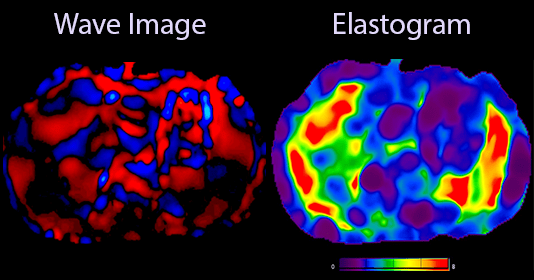
MR Elastography (MRE) enables the measurement of liver stiffnes quantitatively. MR vendors are able to provide MRE pulse sequence and post-processing software. We manufacture all the remaining equipment for MRE to operate. (Left: Image courtesy of, Dr. Ayse Erden, Ankara University)
For MRE sequence to operate correctly, mechanical waves must be generated in synchronized with MR and introduced to the patient.
The 60 Hz. waveform is generated by TelemedWave™ by default. The device is located on the console desk and controlled with a single push-button. TelemedWave™ has options for generating arbitrary waveforms, i.e. signal with multiple frequencies.
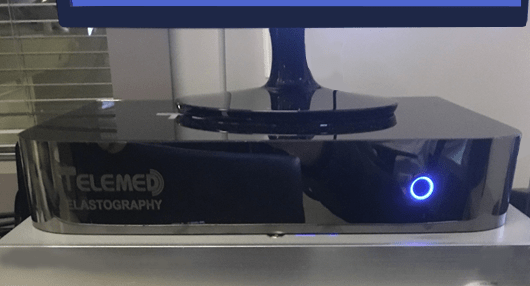
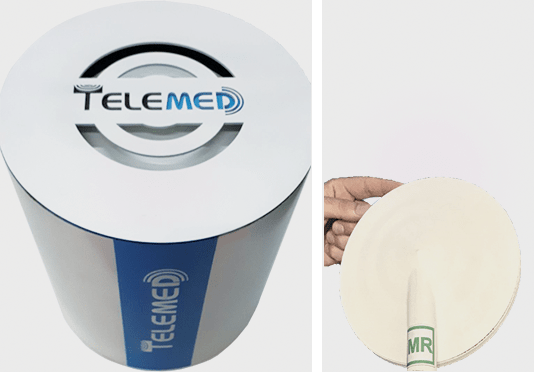
Active driver (left) is responsible for generating the mechanical waves and driven by TelemedWave™. It is placed in the technical room.
Passive driver (right) is a 3D printed part of the MRE solution. With a plastic tube it is connected to the active driver. Passive driver introduces the mechanical waves to the patient during MRE scanning.
The passive driver is placed over the right lower anterior chest wall at the level of the xiphisternum, centered on the mid-clavicular line.
It should be held firmly against the chest wall by a wide elastic band placed around the torso.
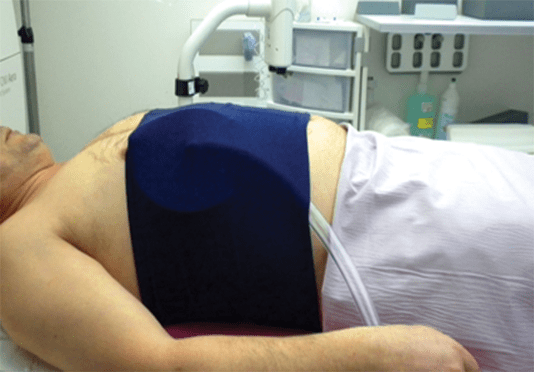
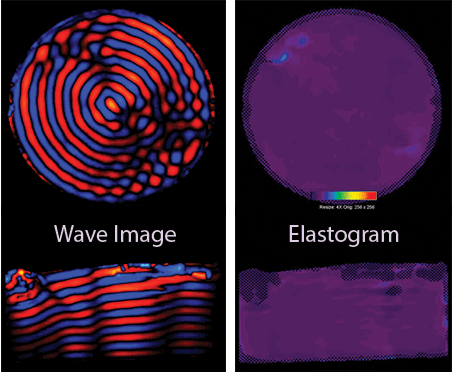
For validation, an in-house single compartment elastography phantom were made from gelatin. The wave images and elastograms of the phantom were obtained with MR Elastography. The measured Young's modulus were observed to be in correlation with the MRE results.